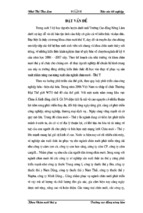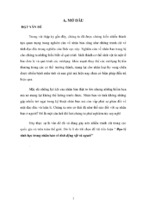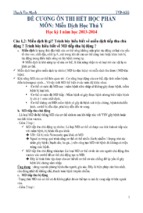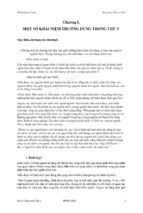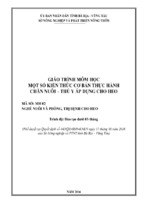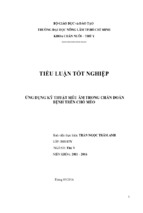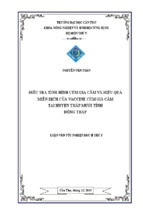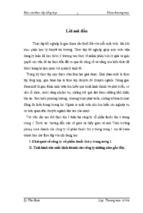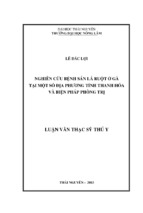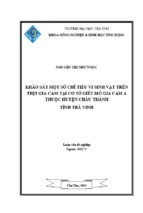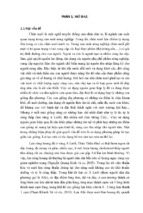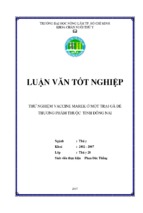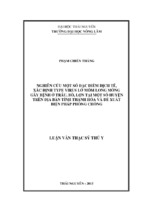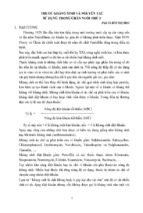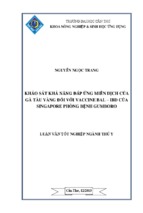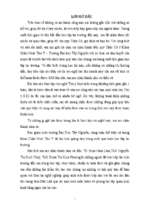A guide to dairy herd management
Level 1, 165 Walker Street
North Sydney, NSW 2060
Australia
Ph: +61 2 9463 9333
Fax: +61 9463 9393
www.mla.com.au
Suite 202, 32 Walker Street
North Sydney, NSW 2060
Australia
Ph: + 61 2 9929 6755
www.livecorp.com.au
A guide to dairy
herd management
RRP AUD$39.00
A guide to dairy
herd management
Contacts:
Meat & Livestock Australia
Level 1, 165 Walker Street
North Sydney NSW 2060
Australia
Ph: +61 2 9463 9333
www.mla.com.au
LiveCorp
Suite 202, 32 Walker Street,
North Sydney, NSW 2060,
Australia
Ph: + 61 2 9929 6755
www.livecorp.com.au
Author:
John House, The University of Sydney, New South Wales, Australia
Editor:
Ian Partridge
Acknowledgment:
Dr John Moran, Department of Primary Industries, Victoria, Australia
Published by:
Meat & Livestock Australia Limited
ABN: 39 081 678 364
October 2011
© Meat & Livestock Australia Limited 2011
ISBN: 978-1-74191-653-9
Care is taken to ensure the accuracy of the information contained in this publication. However, LiveCorp
and Meat & Livestock Australia cannot accept responsibility for the accuracy or completeness of the
information or opinions contained in the publication. You should make your own enquiries before making decisions concerning your interests. LiveCorp and Meat & Livestock Australia accept no liability for
any losses incurred if you rely solely on this publication.
Reproduction in whole or part of this publication is prohibited without prior consent and acknowledgement of LiveCorp and Meat & Livestock Australia.
The inclusion of trade or company names in this publication does not imply endorsement of any
product or company by LiveCorp, MLA or any contributor to this publication. LiveCorp, MLA and the
contributors to this publication are not liable to you or any third party for any losses, costs or expenses
resulting from any use or misuse of the information contained in this publication.
Introduction
lncreasing numbers of Australian dairy animals are being exported to countries seeking to improve their production of milk and dairy products.
Some cattle are going to countries in the tropics and subtropics, other
going to countries with more temperate climates.
These Australian dairy cattle are of high genetic potential; they need good
management and good feeding to produce high yields of milk in their new
homes and environments.
The success of such programs depends largely on the awareness and ability of new owners of these stock to meet these standards of feeding and
general herd management, and this book is designed to provide the information needed for good decisions to be made. Key factors in management
include nutrition, cow comfort and reproductive management.
In collaboration with the importing countries, the Australian Government
has instigated procedures for strict animal selection and quarantine prior
to transport, while the exporting agencies are developing post-arrival protocols to reduce stresses on the newly-arrived stock.
A guide to dairy herd management has been developed for distribution
to dairy farmers and organisations in the countries that source Australian
dairy heifers. It highlights the important dairy herd management practices
required to reduce undue stress on unadapted, high genetic merit dairy
heifers once they arrive at their new destination.
ii
A guide to dairy herd management
Contents
Introduction
i
1 Principles of dairy farm management
1
2 Nutrition
5
Environment and facilities
1
Expertise 2
Animals 2
Dairy herd health and production
3
Key points
5
Feed composition
6
– nutrients for milk production
6
Water 6
Energy 6
Protein 6
Fibre 7
Energy and digestibility
7
Vitamins 8
Minerals 8
Sources of feed
9
Temperate and tropical grasses
9
Nutritional requirements
14
Useful resources
16
3 Feeding management
17
4 Managing young stock
22
5 Reproduction management
32
Key points
Feeding high-production cows
Useful resources
17
17
21
Key points
22
Maternity management
24
Calf management
24
Calf diseases
27
Common management procedures
29
Growth 30
Useful resources
31
Key points
32
Heat detection
32
Reproductive goals
36
Nutrition, cow health and reproductive performance
37
Biosecurity 38
Useful resources
39
Contents continued on next page ...
A guide to dairy herd management
aiii
...Contents continued
6 Cow comfort
40
7 Heat stress
48
8 Milk harvesting
53
9 Common disorders in dairy cattle
64
Key points
Dairy and shed design
Shed design and management
Useful resources
Key points
Sources of heat
Cooling strategies
Cooling cows
Feeding management
Useful resources
Key points
Milking hygiene
Drying cows off
Post-harvest milk quality
Milk cooling and storage
Milk transport
Useful resources
Key points
Facilities to manage sick and lame cows
Metabolic disorders
Useful resources
iv
A guide to dairy herd management
40
40
45
47
48
48
49
50
51
52
53
61
62
62
62
62
63
64
64
69
73
1. Principles of dairy herd management
1 Principles of dairy farm management
Three fundamental factors that determine the
health and productivity of a high-potential dairy
cow are nutrition, comfort and reproduction.
Cows need to be well fed, maintained in a
comfortable environment, and bred in a timely
fashion in order to express this potential.
Conversely, the health and productivity of
cows will be restricted by the factor most
limiting.
The limiting factor has a consequence and
an interaction. For example, if nutrition is
poor, milk production drops quickly and cows
in poor condition will not cycle properly for
good reproduction. If cows are stressed and
uncomfortable, they are more likely to develop
lameness and mastitis—which will affect
both production and reproduction. Failure to
conceive leads to protracted lactations with
more cows in the herd in later lactation and less
milk. Poor reproductive performance reduces
the number of offspring, contributes to forced
culling and provides fewer replacement heifers
to replace the culled cows.
While the concepts of nutrition, comfort
and reproduction are simple, the logistics
of catering to the cows’ needs for 365 days
of the year can be challenging as seasonal
conditions and feed availability fluctuate.
This manual outlines the principles and
some of the practical challenges that may be
encountered in dairy cow management.
Environment and facilities
Cows are resilient creatures but an
uncomfortable environment comes at a cost
to their health and productivity.
Facilities – Animal housing design can either
mitigate or create adverse environmental
conditions. Cows need a clean, dry,
comfortable place to lie down. Walking
surfaces should provide sufficient traction to
avoid slipping but should not be too abrasive
or rough. Cattle should have constant access
to fresh clean water and feed with sufficient
trough space for the number of animals in the
group to avoid competition between animals.
Good feed quality demands feed storage
facilities that prevent feed spoilage.
Cow comfort – When cows have to stand
for long periods because they cannot lie
down in a clean dry area, they may become
lame. Cows that are lame or have to stand on
slippery surfaces are less likely to show sexual
behaviour and hence less likely to become
pregnant. If they are forced to lie in wet dirty
areas, the risk of mastitis is increased. The
results can be more disease, lower production
and heavier culling.
Heat stress – The large body mass of cows of
temperate breeds and their high metabolism
makes them susceptible to heat stress under
hot conditions. Hot cows eat less, are more
likely to become sick and more difficult to
get pregnant. Providing adequate shade and
cooling for cows during hot weather promotes
milk production, reduces mortality, and
improves reproductive performance. Cows
should always have access to fresh clean
water.
Cold stress – Adult cows are generally more
resilient to cold stress than humans because of
their larger body mass; however, frost damage
to teats can make them more susceptible to
mastitis. Young calves need more feed during
cold weather.
Hygiene – Good hygiene will prevent
transmission
of
disease,
but
waste
management is a significant logistical problem
where cattle are managed intensively. Udder
health is largely influenced by the level of
hygiene practiced before, during and after
milking. Milking wet, dirty udders increases
the risk of mastitis, wiping cows’ teats with
a dirty cloth transmits pathogens between
cows, and failing to sanitise teats after milking
provides opportunity for disease to spread.
Young calves are particularly susceptible to
pathogens that cause diarrhoea, but the risk
of disease is reduced by feeding adequate
colostrum, good milk handling practices,
and reducing exposure to manure from other
animals.
Biosecurity – It is always preferable to
prevent the introduction of disease agents
onto the farm. Biosecurity protocols should
be developed to identify and manage sources
A guide to dairy herd management a1
1. Principles of dairy herd management
from introduced livestock, people, equipment,
feed, wildlife and water.
Human food quality – The dairy produces
milk and meat for human consumption,
and the consumer expects that the product
will be nutritious and safe. A number of
pathogens can infect both animals and
humans. Properly functioning equipment
for milk harvesting, cooling and storage
and good milking routines are important for
the health of the cows and for milk quality.
Some medications to treat sick cattle or to
facilitate their reproductive management can
have adverse impacts on milk products or
people. Individual identification, good record
keeping of medication and chemical use, and
observance of withholding periods will avoid
contamination of human food.
Expertise
Dairy farming is a sophisticated industry that
calls for diverse knowledge and expertise
relating to animal health, soils, cropping,
mechanics, business, and construction. As
herd size increases, so does the need for extra
staff. The success of the dairy farm is often
constrained by the weakest link in the staff
team. For example, investing in resources
to keep cows comfortable will not achieve
high production if the person responsible for
feeding the cows does not pay attention to
detail and fails to feed cows their appropriate
ration.
The complexity and difficulties associated
with staff management increase as the number
of staff employed increases. Management
needs to be proactive in developing staffing
structure and protocols. Planning increases
the likelihood of good outcomes. Farms that
do not have development plans for staff
and project plans tend to practice crisis
management, moving from one problem to
the next.
Proactive strategies include:
• Establishing clear goals for each area of
the business
• Developing standard operating procedures
for common tasks
2
A guide to dairy herd management
• Developing training programs for staff
to implement the operating procedures
effectively
• Scheduling staff and defining staff roles
improves staff productivity
• Identifying individual animals and keeping
good records
• Establishing a monitoring system for each
aspect of the business to provide rapid
feedback regarding program outcomes. It
is difficult to manage practices for which
there is no measure of success.
• Identifying knowledge gaps and seeking
professional input in these areas;
examples include nutrition, animal health,
milk harvesting and milking machines, milk
cooling and storage, agronomy, finance.
Animals
There are numerous approaches to
profitability in dairy farming. Some focus on
minimising input costs while accepting lower
milk production; others use high inputs to
maximise production and profitability.
There is no universal ‘best’ system. Which
system is ‘best’ will greatly depend on the
costs of feed and labour and the price for
milk, but will also reflect differences in skills
and resources on any given farm.
The genetic capacity of the cow to produce
large volumes of milk can be realised only if
the amount of nutrients fed meet the nutrient
output in the milk. High-potential cows
cannot produce large volumes of milk if fed
poor-quality or inadequate amounts of feed.
They will attempt to produce milk but at the
expense of body condition and reproduction.
The five conditions of animal care to promote
health, productivity, and longevity are:
• freedom from hunger and thirst
• freedom from discomfort
• freedom from pain, injury or disease
• freedom from fear and distress
• freedom to express normal behaviour.
1. Principles of dairy herd management
Dairy herd health and
production
The cycle of life
The life cycle of a dairy cow is predictable
and therefore can largely be managed with
scheduled activities. For dairy farms that
maintain a seasonal calving pattern with cows
calving every twelve months, the life cycle of
the cow can be linked to an annual calendar
of management events. However, maintaining
a 12-month calving interval poses several
reproductive challenges, and farms calving
cows all year round often have a calving
interval closer to 13 months.
This section focuses on the life cycle of the
cow rather than on the calendar year.
Birth – Holstein cows have been selected for
milk production and not for ease of calving or
mothering ability; thus birth is a high risk event
that can lead to the loss of both the cow and
calf. Calf mortality is approximately three per
cent of those born to cows and some six per
cent of those born to heifers. Calf mortality
at birth can be much greater when heifers
are poorly grown, the nutrition of pregnant
stock is poorly managed, the calving area is
disruptive to normal cow behaviour, and when
sire selection does not take calving ease into
consideration.
Strategies to reduce the risk of calving
problems include nutritional management of
young stock so that heifers are well grown
when they have their first calf and use of
‘calving-ease’ sires to breed heifers.
At birth, the calf is immunologically naïve and
highly susceptible to pathogens. Good quality
colostrum promotes calf immunity and should
be fed to calves within six hours of birth.
Colostrum quality is influenced by:
• the age and health status of the mother
• the timing of colostrum harvest relative to
birth
• the hygiene of the equipment used to
harvest and store the colostrum.
As bacteria can multiply in colostrum, it
should either be fed directly to the calf after
being harvested or cooled rapidly to 4oC for
short-term storage.
The risk of calf disease is reduced when
calves are fed colostrum at birth, fed milk that
has been appropriately handled and stored,
born and raised in a clean dry area and kept
separate from older calves that could be a
source of infection.
Heifer conception – The onset of sexual
maturity is related more to body weight than
to age. Heifers should weigh 85% of the adult
cow weight at the time of calving. Target growth
rates and breeding weights for heifers differ
slightly for those raised in intensive systems
or on pasture. Well-fed Holstein heifers will
gain around 800 grams per day to achieve a
target breeding weight of 350–375kg by 15
months of age; heifers reared on pasture are
more variable, reaching a body weight of 310–
350kg at 18 months.
Weight at joining is related to weight at calving
and subsequently to milk production. Wellgrown heifers are less likely to have calving
difficulties, will produce more milk and get
back in calf more rapidly than poorly grown
heifers.
Calving – Individual animal identification and
good reproductive records and management
are important for management of calving
cows. Reproductive records allow prediction
of when cows are due to calve.
Good nutritional management of cows
before calving reduces the risk of metabolic
diseases that can contribute to weakness and
subsequently calving difficulty. For a good
ration to be effective, it needs to be fed to the
right cow for the appropriate period.
The four weeks prior to calving are recognised
as a crucial time for dairy cattle. Cows that
are fed and managed well before calving are
less likely to have problems with metabolic
diseases such as milk fever, ketosis, retained
placenta, metritis, abomasal displacement or
death.
The health of cows after calving is also
influenced by the environmental conditions at
calving and by the quality of care provided to
calving cows. Cows calving in dirty wet yards
are more likely to develop uterine infections, as
do unhygienic practices or excessive traction
by handlers helping calving cows.
A guide to dairy herd management a3
1. Principles of dairy herd management
Death – Common causes of death include
calving difficulty, mastitis and metabolic
disease; nearly all occur within 60 days of
calving. Strategies to prevent disease and
mortality should deal with the period which
spans the four weeks before and the four
weeks after calving.
Conception – After calving, cows should start
into a reproductive management program
with targets established for average days-tofirst-breeding, efficiency of heat detection and
for pregnancy rate. Contingency plans should
also be in place for cows that experience
calving difficulty, retained placenta, or metritis
so as to minimise their impact on reproductive
performance. The days between calving and
conception dictate the calving interval and
have a large impact on future milk production,
herd structure, and availability of replacement
heifers.
Culling – Cows should be culled from the
herd toward the end of their lactation on the
basis of a lowered future productive potential.
Culling decisions based on voluntary criteria
such as low production, age and conformation
tend to promote herd productivity whereas
those based on involuntary criteria associated
with failure of conception, disease or injury
have a negative impact on herd structure.
Recording the identity of animals culled, stage
of lactation at which they were culled and
reason for culling helps to identify causes of
attrition that need to be investigated.
Dry cows – Cows are dried off 50–60 days
before their projected calving date to allow the
mammary glands to recover. High-risk periods
for new intra-mammary infections include the
early and late dry period and early lactation;
4
A guide to dairy herd management
the non-lactating or ‘dry’ period provides an
opportunity to treat existing intra-mammary
infections and to prevent new intra-mammary
infections.
Strategies to reduce the risk of new intramammary infections during the dry period
include intra-mammary therapy at the
time of drying off and implementing good
environmental and nutritional management.
Attention to detail is important when working
with cows—particularly when administering
medications as poor treatment technique
can introduce pathogens. When milking
is stopped, the mammary gland becomes
engorged and some cows may leak milk. This
opens the teat end allowing bacteria to enter
the gland. Similar engorgement and leakage
of milk can be seen before and after calving.
During these times, the cows must be kept in
a clean environment.
Routines – In batch-calving herds where all
cows calve over a short period, the cycle
of life may be incorporated into an annual
calendar. This is not possible with yearround calving herds where efficiencies
can be gained by scheduling repetitive
routine tasks into daily, weekly or fortnightly
activities. A good record-keeping system
facilitates scheduling of common tasks with
procedures such as vaccination schedules
and reproductive synchrony programs linked
to the stages of the production cycle. Many
dairy software programs can generate lists of
cows according to their stage of lactation or
pregnancy. Establishing a schedule provides
a level of predictability to work routines and
assigns responsibility to individuals promoting
accountability when multiple people are
involved.
2. Nutrition
2 Nutrition
Key points
• Feed composition – All feedstuffs fed to
cows contain some water. To account for
the different water contents, the weight of
feed is expressed on a dry matter basis.
The dry matter of a feed is the weight
of the feed after all the water has been
extracted.
• The dry matter content of mixed dairy
rations is usually formulated to be
50–75% of the ration. Wetter or drier than
this limits consumption.
• Feed utilisation – Dairy cows use feed for
several different functions. These include
‘maintenance’ of bodily functions, growth
(in young stock), pregnancy and milk production.
• Feed consumption – The daily feed
intake for maintenance of a non-pregnant
mature cow is about 1.2% of her body
weight. Thus a 600kg cow needs to eat
about 7.2kg of good-quality dry matter
per day just to maintain bodily functions.
• The amount of dry matter fed to heavily
pregnant, non-lactating cows should be
around 2% of bodyweight. The additional
feed is to meet the needs of advancing
pregnancy.
• Lactation dramatically increases the feed
requirements of high-producing dairy
cows. The amount of good-quality dry
matter a milking cow should be fed can
be estimated by adding 5kg per 10 litres
of milk produced to the maintenance
requirement of the cow.
• High-producing cows can eat 4% of their
body weight in dry matter per day at peak
lactation when fed highly-digestible feed.
• When the nutrient output in milk exceeds
the amount of nutrients eaten during early
lactation, cows lose weight. Excessive
loss of weight or ‘Body Condition’ during
early lactation indicates the nutrient
requirements of the cow have not been
met.
• Milk production is driven by dry matter
intake, which is influenced by the quality
or digestibility of the feed fed.
• Poor-quality feed takes longer to digest
and therefore limits the amount of feed
a cow can eat each day; this limits the
amount of nutrients available for milk production.
• Good-quality forage provides the foundation of dairy rations.
• Key points in growing good-quality forages for dairy cows:
1. Select the most appropriate species
for the region and environment.
2. Manage the crop to optimise growth
and quality.
3. Harvest the crop at the optimum
stage of maturity for nutritive value.
• Excess forage can be conserved as
silage or hay.
• Concentrate supplements can be sourced
already formulated or as raw ingredients.
Their selection should be based on the
need for additional energy or protein in
the diet.
A guide to dairy herd management
5
2. Nutrition
Feed composition
– nutrients for milk production
When dairy cows eat, they extract from the
feed water, energy, protein, fibre, vitamins and
minerals. The four requirements that are most
commonly limiting are water, energy, protein
and fibre.
Water
Water is not a nutrient but is vital for all body
functions and in regulating body temperature.
The body of a cow is composed of 70–75%
water including the rumen contents, and milk
is about 87% water. An abundant, continuous
supply of clean drinking water is vital for dairy
cows.
Energy
Energy is not a nutrient but is derived from
most parts of the feed. Cows use energy to
function (breathe, walk, graze, gain weight,
lactate and maintain a pregnancy). Energy
is the key requirement of dairy cows for milk
production as it determines milk yield and milk
composition. The energy content in feeds is
quantified in terms of megajoules of metabolisable energy (MJ of ME) per kg DM. Starch
and fats are common sources of energy.
Grain is the main source of starch in the ration
of a dairy cow. Cereal grains include maize,
wheat, barley and sorghum while dried cassava is a source of highly digestible starch.
Fermentation of grain in the rumen favours
production of propionic acid (one of the volatile fatty acids) which the cow uses to make
glucose and subsequently lactose—the main
sugar in milk. Increased lactose increases milk
volume and the increased energy availability
also promotes synthesis of milk proteins.
Conversely, increased lactose reduces milk
fat.
The mix of different microorganisms in the
cow’s rumen depends on the type of feed
eaten. Too much grain in a ration produces
excess volatile fatty acid and the pH of the
rumen fluid may decline below pH 6 (acidosis).
This favours the starch-digesting microorganisms and inhibits those that digest fibre.
Acidosis from consuming excessive starch
contributes to indigestion, laminitis, lameness
and possible death.
Fat is a good energy source that is highly palatable and relatively cheap. However, a ration
containing more than 6% fat (on a dry matter
basis) will decrease the digestion of dietary
fibre, and reduce milk protein and milk fat
to below 3%. Solid fats are much safer to
feed than liquid oils. Examples of feeds containing fat include brewers grain (10%), whole
cottonseed (23%), added oils and added
rumen-protected or bypass fat.
Protein
Protein is a constituent of all tissues (muscle,
skin, organs, foetus), and also builds and
repairs the body’s enzymes and hormones.
Protein is needed for the body’s basic metabolic processes, growth, pregnancy and milk
production. The protein content in feeds is
quantified in terms of per cent of the DM.
The rumen microorganisms can synthesise
protein for their own bodies from plant protein (and also from simple, inorganic forms
of nitrogen). They cannot breakdown plant
fibre or use energy-rich starch if the supply of
nitrogen compounds in the ration is low. Slow
digestion of fibre prevents the cow from eating
more feed, and milk production declines.
Milk production is the major influence
on protein needs.
Table 2. 1. Energy requirements for dairy cows
Body function
Energy requirement (MJ)
Maintenance
60 MJ for 500kg bodyweight ± 5 MJ for every 50kg change
Milk production
5 MJ/L for Holstein cows; 6 MJ/L for Jersey cows
Weight change
–28 MJ/kg weight loss; +34 MJ/kg weight gain
Pregnancy
5 months = 5 MJ, 6 months = 8 MJ, 7 mths = 11 MJ, 8 mths = 15 MJ, 9 mths = 20 MJ
Exercise
1, 3 or 5 MJ/km for flat, sloping or hilly land respectively (up to 25% maintenance)
6
A guide to dairy herd management
2. Nutrition
fore produces saliva which buffers the rumen
against sudden changes in acidity (see acidosis).
Table 2.2. Crude protein requirement for levels of milk
production
Milk yield (litres/day)
Crude Protein %
0
13
10
14
20
15
30
16
40
17
50
18
Fibre
The fibre fraction of the ration is digested
slowly in the rumen by rumen microorganisms. For efficient digestion, the rumen must
contain fibre from forages. Fibre ensures that
the cow chews its cud (ruminates) and there-
Fibre can be quantified as Neutral Detergent
Fibre (NDF) and Acid Detergent fibre (ADF).
High levels of NDF reduce the intake of a
ration. High-producing dairy cows are limited
to a NDF intake that is equal to 1.1% of the
cow’s bodyweight.
Dry matter intake (DMI) can be estimated for a
forage or ration
DMI = (1.1 x Body weight)/ NDF %
For example
If a 500kg cow is fed forage with a NDF of
40%
Estimated DMI = (1.1 x 500)/ 40 = 13.75 kg
Energy and digestibility
In ruminants, energy is released from carbohydrates, lipids (fats and oils), and proteins
through digestion by microorganisms in the
rumen. Some 75% of the dry matter in plants
is composed of carbohydrates, with different
forms serving different roles in the plant.
These forms are broken down differentially
in the rumen (Figure 2.1). Plant cell walls are
made up of cellulose, hemicellulose, lignin,
silica (and some protein), and become harder
(more lignified) as the plant ages. Lignin is
completely indigestible.
Plant fibres require more energy to break
down and are generally digested slowly or
are indigestible, and so are less efficient
sources of energy for the animal.
The plant cells of green leaf contain sugars
which are easily digested; starches are generally stored in plant seeds, roots and tubers,
while oil is found in the seeds of some plants.
Oils have a high energy content, but are generally extracted for commercial vegetable oil
with the remaining meal available as animal
feed. Too much oil or fat can upset the digestion of ruminants.
Carbohydrates
Non-structural (non-fibre)
carbohydrates
Cell wall
Neutral detergent fibre
Acid detergent fibre
Sugar
Starch
Pectin
Rapid to medium
breakdown
Hemicellulose
Cellulose
Slow
breakdown
Lignin
Indigestible
Figure 2.1. Digestibility of carbohydrate components of feedstuffs
A guide to dairy herd management
7
2. Nutrition
Acid Detergent Fibre (ADF) is the more indigestible or more slowly digested component
of NDF, and is mostly lignin from plant cell
walls. A high ADF content indicates the forage
is mature and the amount of available energy
will be low. The amount of ADF in the diet is
associated with milk fat percentage.
Vitamins
Vitamins are organic compounds that animals require in very small amounts. They are
needed for many metabolic processes in the
body, eg for production of enzymes, bone
formation, milk production, reproduction and
disease resistance.
Fresh forages are generally high in vitamins.
Vitamins can be water-soluble or fat-soluble.
The B group of vitamins are water-soluble
and are produced by bacteria in the animal’s digestive system. Fat-soluble vitamins
(Vitamin A, D, E and K) can be stored in the
liver or fatty tissue for 3–6 months. They may
need to be supplemented if cattle have been
off green feed for a long time as they are lost
with prolonged storage of feeds.
Minerals
Minerals are inorganic elements. They are
needed for bone and teeth formation, for
enzyme, nerve, cartilage and muscle function
or formation, milk production, blood coagulation and efficient utilisation of energy and
protein.
Table 2.3. The macro-mineral requirements for dairy
cows as a percentage of total DM intake.
Mineral
Requirement (% of total DMI)
Calcium (Ca)
0.70%
Phosphorus (P)
0.40%
Magnesium (Mg)
0.30%
Potassium (K)
1.06%
Sodium (Na)
0.25%
Chlorine (Cl)
0.28%
Sulphur (S)
0.20%
Examples of deficiencies of macro-minerals
for dairy cows include:
Calcium (Ca) – Deficiency in young animals
leads to soft bones and growth deformities.
Inappropriate management of cow around
calving results in milk fever
Phosphorus (P) – Deficiency results in reduction in intake, lameness, low milk and poor
fertility
Magnesium (Mg) – Deficiency results in nervousness, restlessness, twitching of muscle
and the cow will collapse.
Trace or micro-mineral requirements
Table 2.4. Trace mineral requirements for dairy cows in
relation to total DM intake
Trace mineral
(mg per kg DM)
Total intake
(mg)
Copper (Cu)
12
265
Zinc (Zn)
52
1140
Manganese (Mn)
40
880
Cobalt (Co)
0.11
3
Selenium (Se)
0.25
5.5
Iodine (I)
0.60
Iron (Fe)
15
13
330
Symptoms of deficiency of micro-minerals in
dairy cows:
Copper (Cu) – Weak immune system, reduced
conception rate, dilution of coat colour, brittle
bones and diarrhoea.
Zinc (Zn) – Weak immune system, reduced
conception rate, reduced feed intake,
increased incidence of lameness.
Manganese (Mn) – Silent heats, reduced conception rates, cystic ovaries.
Selenium (Se) – Increased retained placenta, reduced fertility, weak or silent heats,
increased incidence of mastitis, muscle weakness in young stock.
Cobalt (Co) – Rough hair coat, poor intake,
anaemia, weakness.
Iodine (I) – Enlarged thyroid gland (goitre).
8
A guide to dairy herd management
2. Nutrition
Sources of feed
Temperate and tropical
grasses
Forages
Adequate quantities of high-quality forages
are the basis of profitable milk and livestock
production. The cheapest source of forage is
usually home-grown fodder or grasses.
Where land is available, the cheapest source
of forage is usually grazed grass. The aim for
dairy production is to manage pastures by fertiliser, grazing management and water (rainfall
or irrigation) to keep the pastures in a young
vegetative state (see Figure 2.2) and to maximise green leaf intake by the cows.
Because of high or low seasonal temperatures and/or lack of rainfall, there is typically
a problem period when the quantity or quality
of grazing is inadequate for high milk production. Thus dairy farms may need to integrate a
range of feed resources to maintain productivity (milk output/unit input) and profitability.
These forage resources will vary with the
region’s climate but include temperate, subtropical and tropical pasture species (grasses
and legumes) and forage crops. High-quality
silages are produced from maize and legume
crops, while acceptable quality silage can
be produced from the surplus growth from
pastures. Feeding silage in combination with
Tropical grasses have developed to make
efficient use of intense solar radiation and
photosynthesise through a C4 pathway.
Temperate grasses are adapted to
photosynthesis from less intense solar
radiation using a C3 pathway.
The C4 pathway is associated with a
different leaf structure that is more fibrous
than that of the C3 plant, and thus tropical
grasses are always of lower digestibility
than temperate grasses at similar stages
of growth (Figure 2.2). It is thus difficult to
get the highest yields of milk from tropical
pastures.
Similarly tropical grasses are lower in sugars
so that silage fermentation sometimes needs
the addition of extra sugar as molasses.
concentrates will balance out the seasonality,
and maintain production per cow.
Where the land use system is too intense
for grazing, cattle are fed harvested forages
from pastures or fodder crops. These systems
require high inputs of fertiliser and manure
to sustain production of high yields of highquality forage.
Digestibility (%)
Energy (MJ/kg DM)
>75
65-70
early to mid-flowering,
green
late flowering
with seedheads
55-60
<55
>9.9
Moderately high
production
9.1-9.9
Moderate production
8.2-9.1
Dry stock maintain
weight
7.4-8.2
active green growth
late vegetative,
green leaf
60-65
High production
Dry stock lose
weight
dead leaf and stem
<7.4
Figure 2.2 Forage quality of temperate (dotted line) and tropical (solid line) grasses at
different stages of plant development (modified from NSW Ag Primefact 1070)
A guide to dairy herd management
9
2. Nutrition
The basic principles for producing quality forages are:
1. Select the most appropriate forage species for the region
2. Prepare the forage production area for
sowing
3. Manage the crop, particularly with adequate fertiliser, to optimise growth and
quality
4. Graze the pasture or harvest the crop at
the best stage of maturity for nutritive
value.
Choice of method of conservation may be
partly driven by rainfall patterns during the
growth season but, with dairy cattle, silage
increases the yield of nutrients, decreases
feed costs, lowers harvest losses, and often
increases forage quality.
The saying “Rubbish in, rubbish out” especially applies to dairy cow rations where the
quantity and quality of milk produced is a
direct result of the ration being fed. The quality
of all the components of a ration, with special
attention to the forage components, must be
monitored when feeding dairy cattle.
Effective fermentation is controlled by:
• moisture content of the forage
• sugar content of forage
• exclusion of air, aided by fineness of chop
• bacterial populations, both naturally
occurring and supplemented.
Knowing the nutritional value of plants at
varying stages of their life cycle will help
determine the correct time to harvest forage
for maximum quality and quantity (Figure 2.2).
Silage
Ensilation is an anaerobic fermentation process that converts plant sugars to organic
acids. The resulting acidity effectively ‘pickles’
the forage to maintain its quality for long
periods.
The forage is generally wilted to 30% dry
matter before being ensiled, with silage additives added if forage dry matter is below 30%.
The leaf of a grass plant is at its highest quality
(nutritional value) when actively growing,
quality declines slightly during the late vegetative stage, and then decline markedly once
it flowers and puts up stalks. The quantity
moves through the opposite phase. Forages
should be grazed during their active growth
phase and cut during their late vegetative
phase to maximise forage quality.
Forage harvest and preservation
In pasture-based dairy systems, excess
forage from the peak production is used to
fill feed gaps at the times of year when the
growth of forage is inadequate to meet the
nutritional needs of the herd. Feed gaps may
be caused by low temperatures in temperate
and subtropical regions, and by dry seasons
in tropical and subtropical regions. Irregular
feed gaps may be created by droughts associated with inter-annual climate variability.
Conservation may be as hay or silage but the
rule of “Rubbish in, rubbish out" applies; good
quality hay or silage cannot be made from
poor quality forage.
10
A guide to dairy herd management
Silage must be fine-chopped to allow compaction and
exclusion of air.
Poor quality silage - coarse maize stems that do not
compact.
2. Nutrition
fermentation associated with good silage.
Clostridial bacteria are inefficient at converting
plant sugars to acids, and produce silage of
poor nutritional value.
As acidity builds up in the silage, microbial
activity diminishes and the plant material is
preserved. Corn silage should range from pH
3.5 to 4.5 and haylage from pH 4.0 to 5.5.
Smaller quantities of silage can be preserved in sealed
plastic bags.
Wetter forage requires a lower pH to prevent
undesirable bacteria growth and this means
more sugar must be available for conversion
to acid. Legumes have a natural buffering
capacity and require more acid to reach a low
pH than grasses or corn.
Air is excluded in a silage pit by compaction with heavy tractors; however, suitable
anaerobic conditions can be created by compacting and storing the forage in a sealed
vessel or plastic bag. For good compaction,
the green forage needs to be chopped into
lengths of 1–2cm.
Any contact between the silage and air will
result in mouldy, decayed, inedible, and sometimes toxic, material that becomes waste. Any
small amount of oxygen not removed by compacting is rapidly removed by bacteria.
The quality of fermentation depends on the
types of bacteria; effective fermentation
requires the presence of lactic acid bacteria
and the absence of clostridial bacteria. Lactic
acid bacteria convert plant sugars to acids
efficiently, and produce the non-odorous
Silage storage losses can be high if silos are
not sealed properly or become soaked by
rainwater or runoff. Silage must be fed soon
after removal from storage to avoid spoilage
from exposure to air; storage facilities with
an exposed silage surface must be sized to
match the rate of feeding.
The surface area of the open face should
be kept to a minimum to minimise oxidative
spoilage. This is achieved by only opening the
stack on one side and keeping the face vertical and even.
Poor silage management practices can result
in reduced feed quality, low milk production,
and increased risk of health problems.
Hay
Hay is made by mowing a forage grass
or legume and allowing it to dry in the sun.
The dry grass can be baled for ease of handling or stacked. Forage species with heavier
stems are cut with a mower and the stems
then crushed or crimped with a conditioner to
speed drying.
The timing of harvest should be based on the
maturity of the crop (for the balance between
yield and growth stage) and weather conditions. Grass hay crops should be mowed
when or shortly after the plants produce seed
heads; lucerne hay should be mowed before
the crop is in bloom.
Most hay crops will take two to three days
to dry in the spring when the plant is high in
moisture and less time during the summer.
Feed quality will be lost if the cut forage is
rained on. Drying is accelerated by turning the
hay with a side-delivery rake or fluffing it with
a tedder or inverter. Raking should be done
when the hay has dried down to 35 to 45%
moisture. It is best done on the day of baling.
Good silage must be protected against rainfall.
A guide to dairy herd management
11
2. Nutrition
Some forage leaf is lost when mowing or by
raking during curing. The best practice is to
rake the hay once only and that should occur
on the day of baling.
Table 2.5. Recommended moisture contents (%) for
safe storage of various bale types
Moisture content
(%)
Bale type
Small rectangular bales
16–18
Round bales (soft centre)
14–16
Round bales (hard centre)
13–15
Concentrate and protein supplements
Milking cows need concentrates to supplement the forage—with the type of concentrate
depending on the composition of the forage.
Some supplements that are by-products from
processing crops include canola meal, soybean meal, cottonseed meal, beet pulp, citrus
pulp and rice bran; others are formulated concentrates from feed millers.
By-products can be categorised as energy or
protein supplements. Table 2.4 classifies supplements to balance cow diets that may be
low in dietary energy or protein.
Large rectangular bales
12–14
Source: http://new.dpi.vic.gov.au/agriculture/
grain-crops/pastures/haystack-fires-spontaneous-combustion
Hay should not be baled until it is under about
20% moisture to prevent spontaneous combustion in the shed or stack.
Products such as citrus pulp may contain a
large amount of water. Calculations regarding
energy and protein to determine how much
should be fed are based on the dry matter
content of the ingredients.
Storage
Good conditions for feed storage are important to maintain feed quality, minimise
wastage, and reduce the risk of feed spoilage
and toxicoses.
Hay baled when too moist will heat up and may
spontaneously combust when stored.
Important considerations for storing feed
include:
• the characteristics of the feed—particularly moisture content
• accessibility of the location under different
weather conditions
• risks associated with poor storage conditions, for example the build-up of
mycotoxins in mouldy feed
Table 2.6. Classification of supplements and basal forages according to their energy and protein contents.
Energy/protein
classification
Poor energy
(<8 MJ/kg DM of
ME)
Moderate energy
(8–10 MJ/kg DM of ME)
Good energy
(>10 MJ/kg DM of ME)
Poor protein
(<10% CP)
Corn stover
Rice bran (poor)
Most native grasses
Sweet corn cobs
Molasses
Maize silage
Citrus pulp
Moderate protein
(10–16% CP)
-
Well managed grasses
Soybean
Immature grasses
Maize grain
Sorghum grain
Rice bran (good)
Wheat pollard
Good protein
(>16% CP)
Urea
Legume hays
Whole cottonseed
Brewers grain
Soybean curd
Soybean meal
Cottonseed meal
12
A guide to dairy herd management
2. Nutrition
• wastage
• turnover
Dry commodities need to be kept dry. Wet
commodities should be held in a concrete
silo, and the volume of feed ordered must
be matched to the amount required so that
the feed remains fresh. Wastage is generally
highest when the feed is stored on soil, which
may also contaminate the feed with stones
and dirt. Flies can be a problem with wet protein sources and wind loss with dry dusty
ingredients.
Feed wastage
Feed may be wasted through physical loss
of dry matter or by spoilage of feed quality.
Physical loss occurs if the feed is trampled
by cows; spoilage with reduced energy and
protein value occurs with contamination by
moulds or fungal toxins, moisture damage
or leaching. The most common example is
mould on spoiled silage.
Feed losses occur during delivery and storage,
when diets are mixed, and especially when
the diet is fed out to cows.
Wastage can be less than 5% with good
feeding systems but as high as 30% when fed
on bare ground.
Cows may trample and waste about 30% percent of
hay fed in the field.
foundation of the ration; concentrates and
by-products are added to provide additional
energy and protein.
Digestion is facilitated by continuous regurgitation (rumination) of plant fibre (cud) and
chewing to reduce particle size. Chewing promotes the production of saliva, which contains
high levels of buffering salts and so helps to
maintain a stable pH of the rumen fluid. The
rumen microbes break down plant cell contents and cell walls, including fibres, for their
own multiplication. They use the plant protein
and derive energy from sugars and starchs; in
the process, they generate volatile fatty acids
(VFAs) that are absorbed through the rumen
wall to provide the major source of energy for
the cow. The main VFAs are acetic acid (acetate), propionic acid (propionate) and butyric
acid (butyrate).
The microbes are continually washed out of
the rumen and are in turn digested further
down the digestive system. This microbial
protein is an important source of energy and
protein for the cow.
These cows will waste less than 5% of their feed.
Feed digestion and utilisation
Feed eaten by cows is initially digested in
the rumen by the mix of microbes present,
and these rumen microbial flora must be
kept healthy for the health and productivity
of the cow. Good-quality forage provides the
The type and number of microbes present in
the rumen depends on the type and quality of
feed in the ration. The microbes that breakdown fibre prefer a pH range of 6.2–6.8
whereas the microbes that breakdown starch
prefer a pH range of 5.2–6.0. Under normal
conditions, the pH is maintained at 5.5–6.5 by
the buffering action of the saliva.
Achieving optimal rumen function involves
promoting maximum microbial growth, survival and activity with a rumen pH of 5.8–6.4.
A guide to dairy herd management
13
2. Nutrition
Factors that affect rumination are:
• order in which the ration is fed
• particle size of the ration
• number of times the ration is fed per day
• type of ration fed.
The stability of rumen pH is normally maintained by the inflow of saliva, the rapid
absorption of VFAs from the rumen and the
predominance of acetic acid within the rumen.
Order in which the ration is fed
There are numerous approaches to feeding
cows. In ‘component feeding’, ingredients are
fed separately; this gives variable intakes of
different components and results in an unbalanced diet. The greatest risk associated with
component feeding occurs when concentrates are fed before the forages as this leads
to rapid fermentation in the rumen and disruption of the normal rumen flora.
Forages should always be fed before concentrates, or the ingredients mixed together as a
‘Total Mixed Ration’ (TMR), to promote consumption of a balanced ration.
Particle size of ration
All forage pieces must be longer than 11mm
but with only 10% of the ration being longer
than 40mm. This will stimulate bolus formulation, increase chewing and saliva production
and hence increased buffering. The overall
affect is to improve the rumination process.
If the forage is cut too short, rumination and
saliva production will be reduced, with the
increased risk of the cow developing ruminal
acidosis. If the particle size is too long, digestion will slowed, reducing feed intake and
limiting the availability of nutrients for milk
production.
Number of times the ration is fed per day
Feeding a cow more than once per day
stimulates continuous saliva production
and buffering, which helps maintain a stable
rumen pH. Cows are also stimulated to eat by
the presentation of fresh feed.
Type of ration fed
A ration high in roughage is associated with
a rumen pH of 6.5 whereas a ration high in
14
A guide to dairy herd management
concentrate is associated with a rumen pH
of 5.5. Prolonged acidic conditions within
the rumen increase the risk of damage to the
rumen papillae and their capability to absorb
nutrients.
Nutritional requirements
The nutritional requirements of the cow
change with growth, pregnancy and lactation.
Most health-related problems and deaths in
mature dairy cows occur within 60 days of
calving. Correct management of the ‘transition period’, which covers the month before
and the month after calving, is particularly
important. Good reproductive management
with accurate pregnancy determination establishes when the cow is due to calve and that
the correct rations are fed to the right cow at
the right time.
The daily maintenance feed intake of a nonpregnant mature cow is about 1.2% of her
body weight per day—a 600kg cow needs
to eat about 7.2kg of good-quality dry matter
per day. The amount of dry matter fed to
heavily pregnant non-lactating cows should
be around 2% of bodyweight or 12kg DM to
meet the needs of the developing foetus. The
cow’s appetite will decline during the last 3–4
weeks of pregnancy, particularly during the
last week of gestation when dry matter intake
may be reduced by 50%.
Thus appetite is decreasing while the nutrient
requirements of the developing calf and the
cow are increasing.
Three common nutritional problems that occur
around the time of calving are:
• negative energy balance (ketosis and fatty
liver)
• hypocalcaemia
• ruminal acidosis
Negative Energy Balance – The first aim of the
transition ration is to minimise the energy deficit experienced by the cow in the face of a
declining appetite by adding concentrates to
her ration during the last 3–4 weeks of pregnancy.
Cows that experience excessive negative
energy balance are more likely to retain their
placenta, develop metritis, and displace their
stomach. These cows also take longer to get
2. Nutrition
pregnant increasing the risk of culling due to
conception failure.
Hypocalcaemia – High-producing older cows
are prone to experiencing a rapid decline in
blood calcium around the time of calving. This
reflects the large amount of calcium that is
incorporated into the milk produced by the
cow. The second objective of the transition
ration is to minimise the decline in blood calcium around the time of calving to prevent
cows from going down with milk fever (weakness caused by low blood calcium).
Cows with milk fever need immediate injection with
calcium boro-gluconate.
Older cows are more likely to have problems
with milk fever than heifers. Cows that succumb to milk fever are more likely to have
calving difficulty, retain their placenta, and
have problems with mastitis than cows that
do not. Less than 2% of cows should experience problems with milk fever.
A high incidence of milk fever indicates a
nutritional management problem.
Strategies to prevent milk fever include:
• ensuring that there is adequate magnesium in the ration by including 50 grams of
magnesium oxide per head per day in the
feed during the last 3–4 weeks of gestation.
• keeping the fat content of the diet below
4% during the last 3–4 weeks as excess
fat binds to magnesium preventing its
absorption in the rumen.
• feeding a diet low in calcium, typically by
feeding higher levels of cereal hays such
as oaten or wheaten hay that are low in
calcium. However, it is often difficult to
find feedstuffs that are low in calcium but
provide enough energy and protein to
overcome the negative energy balance.
• feeding a diet that contains low levels of
potassium and higher concentrations of
chloride and sulphur by feeding forages
that are low in potassium and adding
salts such as calcium chloride or ammonium sulphate to the feed. As the salts
are not very palatable, it is important to
monitor how much the cows are eating
to avoid inducing negative energy balance. Commercial salt preparations such
as Biochlor (Arm and Hammer Animal
Nutrition) are reported to be more palatable.
Ruminal acidosis – Lactation dramatically
increases the feed requirements of highproducing dairy cows. An extra 5kg of
high-quality dry matter should be added to
the maintenance ration per 10 litres of milk
produced; high-producing cows can consume
4% of their body weight in dry matter per day
at peak lactation when fed highly digestible
feed. Abrupt increases in the energy content
of the ration causes excessive fermentation (ruminal acidosis) and disruption of the
microbes in the rumen. Gradual increases in
the energy content of the ration before calving
promote gradual adjustments in the microbes
in the rumen allowing the cow to safely eat the
higher energy lactating-cow ration.
Feeding the milking cow
Milk production is driven by dry matter intake,
which is influenced by the quality or digestibility of the feed fed. Poor-quality feed takes
longer to digest and therefore limits the
amount of feed a cow can eat each day and
the amount of nutrients available to produce
milk. When the nutrient output in milk exceeds
the amount of nutrients ingested during early
lactation, cows lose weight. Excessive loss
of weight or ‘Body Condition’ during early
lactation is associated with reduced milk production and an increased risk of disease.
Milk fat and milk protein
Rations high in starch or non-fibre carbohydrate are fermented to propionic acid and
have the greatest influence on milk protein.
A guide to dairy herd management
15
- Xem thêm -

